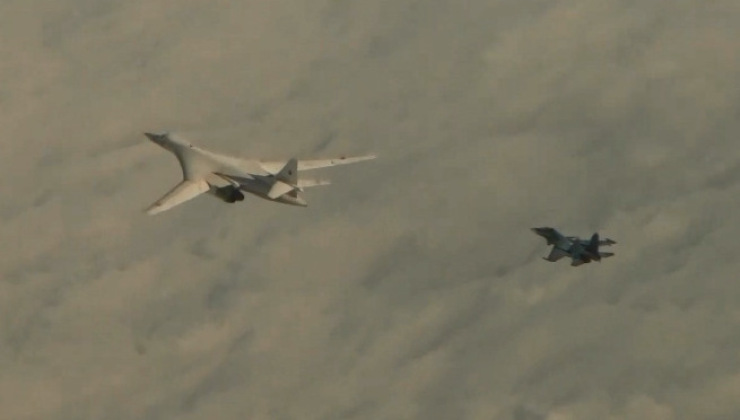Belarusian President Alexander Lukashenko announced on August 26 that his country’s combat jets had been modified to deploy nuclear weapons, with accompanying reports from Reuters and other Western sources indicating that its Su-24M strike fighters may have been recommissioned for this purpose. The announcement comes amid high tensions between Minsk and the Western world, and follows warnings by Lukashenko in December 2021 that his country retained Soviet built nuclear weapons infrastructure on its territory and could quickly host Russian strategic weapons. While Belarus is not a nuclear weapons state, it could well be involved in a nuclear sharing agreement with Russia much as multiple NATO member states such as Germany and Belgium are expected to employ American nuclear warheads in the case of war. Although Belarus recently acquired 12 Su-30SM heavyweight fighters from Russia, which are fielded alongside two squadrons of conservatively modernised Soviet built MiG-29s, the MiGs are not well optimised for a nuclear strike role while their heavier counterparts, being few in number, would be stretched very thinly if relied on for such roles alongside their current air superiority and conventional strike missions.

Belarus was estimated to field 42 Su-24s in 1995, although 12 of these were subsequently sold to Sudan where they serve today. Having been retired from 2010-2012, alongside Su-27 air superiority fighters as measures to reduce the fleet’s operational costs, the ability to restore the aircraft for service after decades in storage remains questionable. It is potentially more likely that Russia could deliver its own recently retired but more modernised Su-24Ms as aid should Belarus seek to restore a dedicated strike fighter unit, with well over 100 having left the Russian Air Force in the past decade alone.
Aside from the Su-24 Belarus previously fielded an overall more capable and unique strike fighter class which, due to its very high operational costs, saw only around 40 built for the Soviet Air Force all of which were based on Belarusian territory. The MiG-25BM was the last variant of the MiG-25 Foxbat ever built, and capitalised on the class’ extreme Mach 3+ speed, unrivalled operational altitude and long range as a strike platform optimised for air defence suppression. Reportedly combat tested against Iran in the 1980s, the aircraft deployed advanced electronic warfare equipment and a range of cruise missiles. It represents a unique kind of asset which both Russia and Belarus lack today – comparable to the U.S. Navy’s E/A-18G or the Chinese J-16D. With Belarus having scrapped its MiG-25BM fleet, however, leaving only a small number in museum storage, resurrecting this capability will be even more difficult than the Su-24. The primary question remains whether the country can afford the high operational costs of a new dedicated strike fighter class, or whether far less ideally it will be forced to integrate nuclear weapons onto its Su-30s, MiG-29s, or possibly even its Su-25 ground attack jets.
